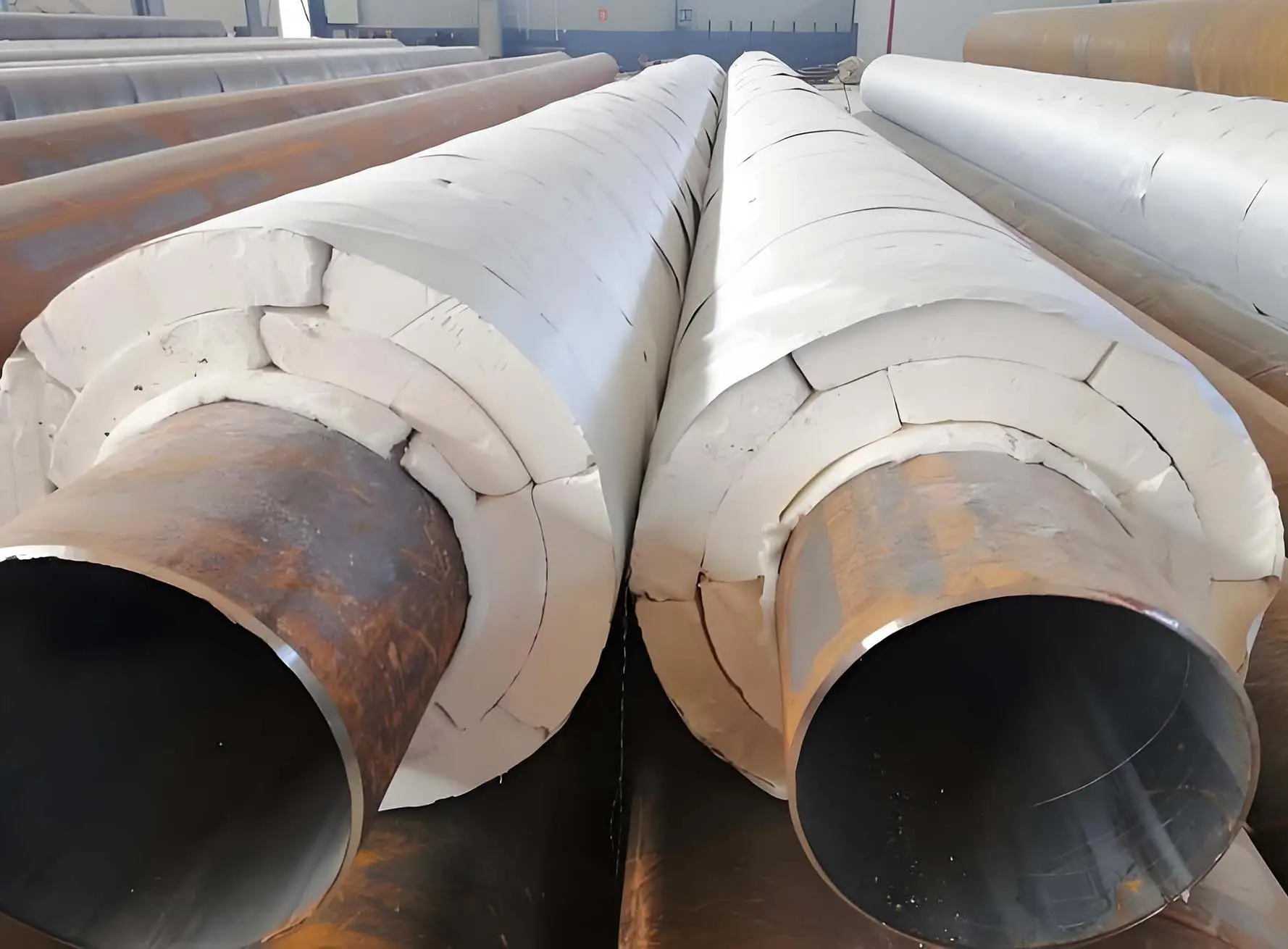In industrial and commercial settings, efficient thermal management is critical for energy savings, safety, and equipment longevity. Among the myriad insulation materials available, calcium silicate pipe insulation stands out as a versatile, high-performance solution.
What Is Calcium Silicate Pipe Insulation?
Before diving into its uses, let’s clarify what calcium silicate insulation is. It’s a rigid, fire-resistant material made from calcium silicate (a compound of calcium oxide and silica) reinforced with fibers (often cellulose or mineral wool) and binders. Key properties include:
- Low thermal conductivity: Minimizes heat loss/gain.
- High temperature resistance: Withstands up to 650°C (1,200°F).
- Fire safety: Classified as non-combustible (A1 rating per EN 13501-1).
- Durability: Resists moisture, corrosion, and chemical degradation.

Top Uses of Calcium Silicate Pipe Insulation Materials
1. Industrial Steam and Process Piping
Industrial facilities—from power plants to chemical refineries—rely on high-temperature steam and process pipelines to transfer energy or raw materials. Calcium silicate insulation excels here for two reasons:
- Temperature resilience: It maintains structural integrity in extreme heat (up to 650°C), making it ideal for boiler feedwater pipes, steam mains, and process lines in refineries or petrochemical plants.
- Energy efficiency: By reducing heat loss, it lowers operational costs. For example, insulating a 100mm-diameter steam pipe with calcium silicate can cut heat loss by 80% compared to uninsulated pipes.
Example: Oil refineries use calcium silicate to insulate pipelines carrying crude oil or heated process fluids, preventing energy waste and protecting workers from burns.
2. HVAC Systems (Heating, Ventilation, and Air Conditioning)
HVAC systems rely on pipes to distribute hot or cold water, chilled glycol, or refrigerants. Calcium silicate insulation is a go-to for:
- Chilled water lines: Its low thermal conductivity prevents condensation (which causes mold and corrosion) in air-conditioning pipes.
- Hot water heating systems: It retains heat, reducing energy use in residential, commercial, or institutional buildings (e.g., schools, hospitals).
- Fire protection systems: Many HVAC systems integrate fire sprinklers; calcium silicate’s non-combustible nature adds an extra layer of safety.
Example: Office buildings use calcium silicate-insulated copper pipes for hydronic heating, ensuring consistent warmth while meeting fire codes.
3. Municipal and District Heating Networks
Underground heating networks, common in cold climates (e.g., Scandinavia, Canada), transport hot water from central plants to homes and businesses. Calcium silicate insulation is preferred here because:
- Moisture resistance: Unlike foam-based materials, it doesn’t degrade when exposed to groundwater or rain, extending lifespan.
- Space efficiency: Its rigid form allows for thin, space-saving insulation layers, critical in dense urban areas where trench width is limited.
Example: A city’s district heating system uses preformed calcium silicate sleeves around steel pipes, reducing heat loss by 70% and cutting maintenance costs by 30%.

4. Fire Safety Systems (Pipes and Ducts)
Fire suppression systems (sprinklers, standpipes) and smoke exhaust ducts require insulation that withstands extreme heat. Calcium silicate’s A1 fire rating makes it ideal:
- Sprinkler pipes: Insulating with calcium silicate prevents freezing in cold climates and maintains water pressure during fires.
- Smoke ducts: It limits heat transfer, protecting structural components and ensuring smoke is safely vented.
Example: High-rise buildings use calcium silicate-insulated fire standpipes to comply with fire safety regulations (e.g., NFPA 25) and prevent pipe failure during emergencies.
5. Cryogenic and Low-Temperature Applications
While calcium silicate is often associated with high heat, it also performs well in low-temperature settings (down to -40°C/-40°F). This makes it suitable for:
- Liquefied natural gas (LNG) pipelines: Insulating LNG transfer lines prevents vaporization and maintains safe operating temperatures.
- Refrigeration systems: It protects pipes carrying liquid nitrogen or ammonia, reducing energy loss and preventing ice formation.
Why Choose Calcium Silicate Over Other Materials?
Compared to alternatives like fiberglass, foam, or mineral wool, calcium silicate offers unique advantages:
- Longevity: Resists moisture and chemicals, lasting 20–30 years (vs. 10–15 years for foam).
- Ease of installation: Preformed sections or flexible blankets simplify fitting around complex pipe geometries.
- Regulatory compliance: Meets global standards (e.g., ASTM C533, EN 14313) for thermal performance and fire safety.
Calcium silicate pipe insulation materials are far more than just “heat blockers”—they’re a critical component in energy-efficient, safe, and durable industrial and commercial systems. From high-temperature industrial processes to cold-climate HVAC networks, their unique blend of heat resistance, fire safety, and moisture resilience makes them indispensable.

